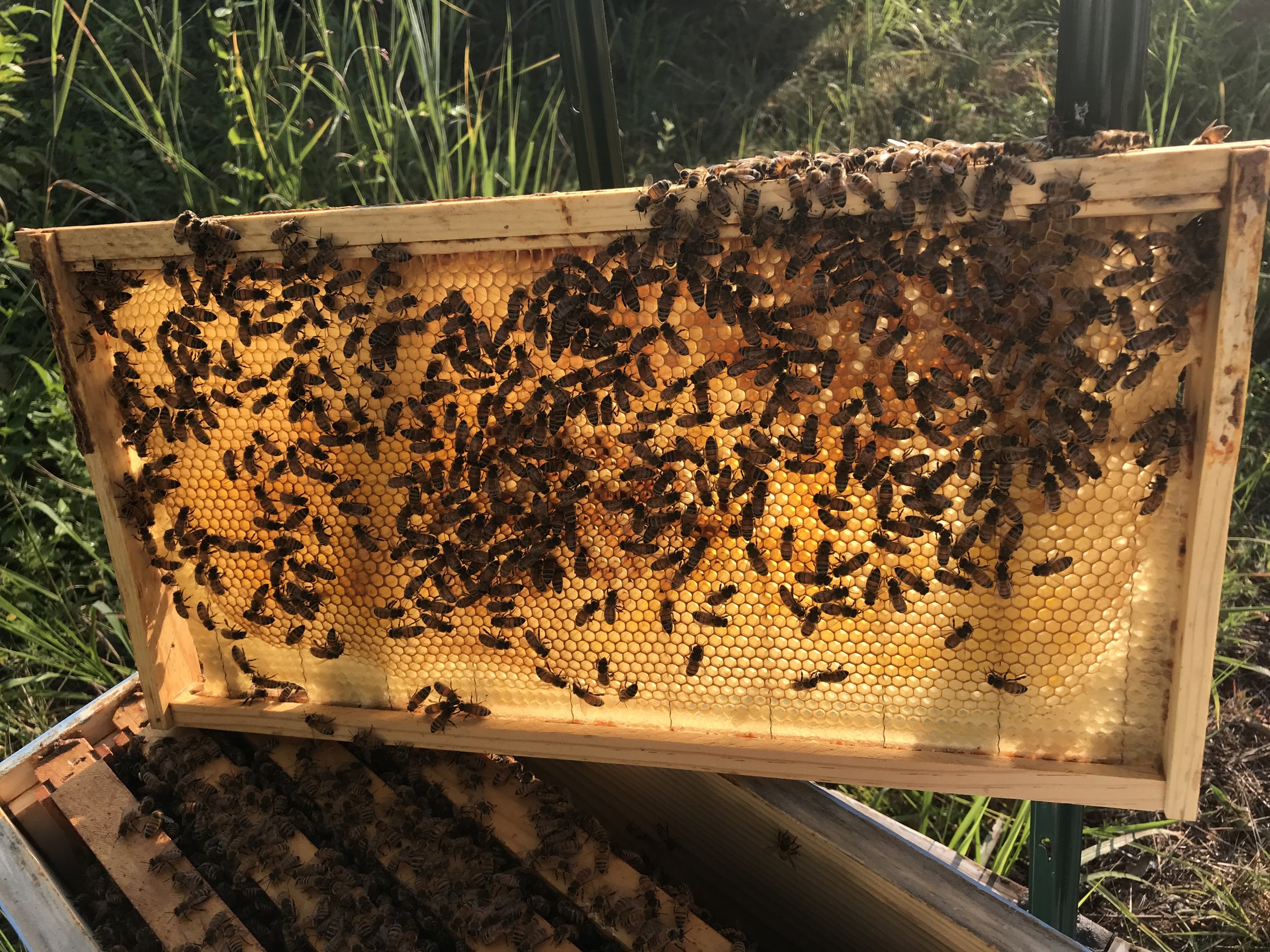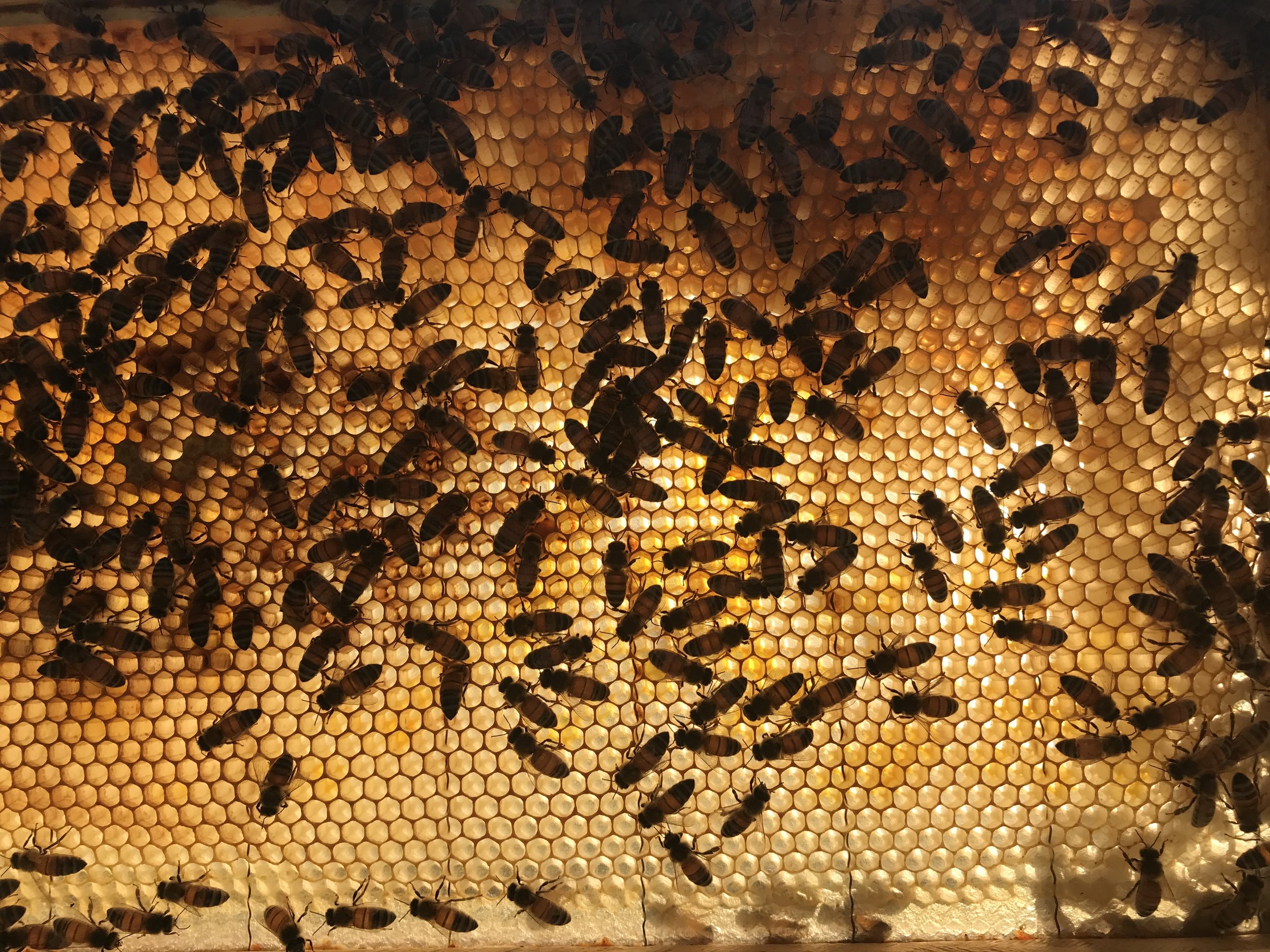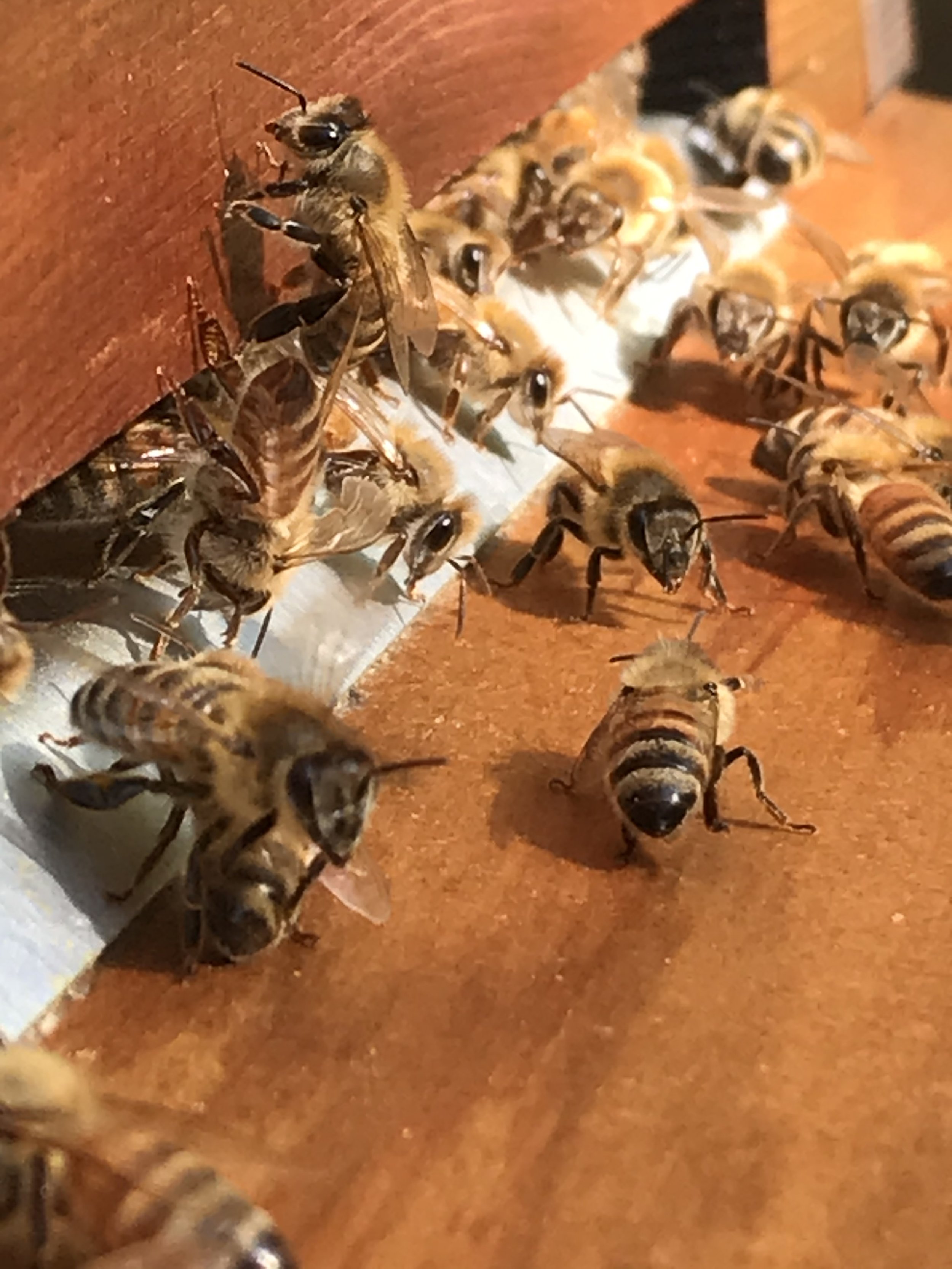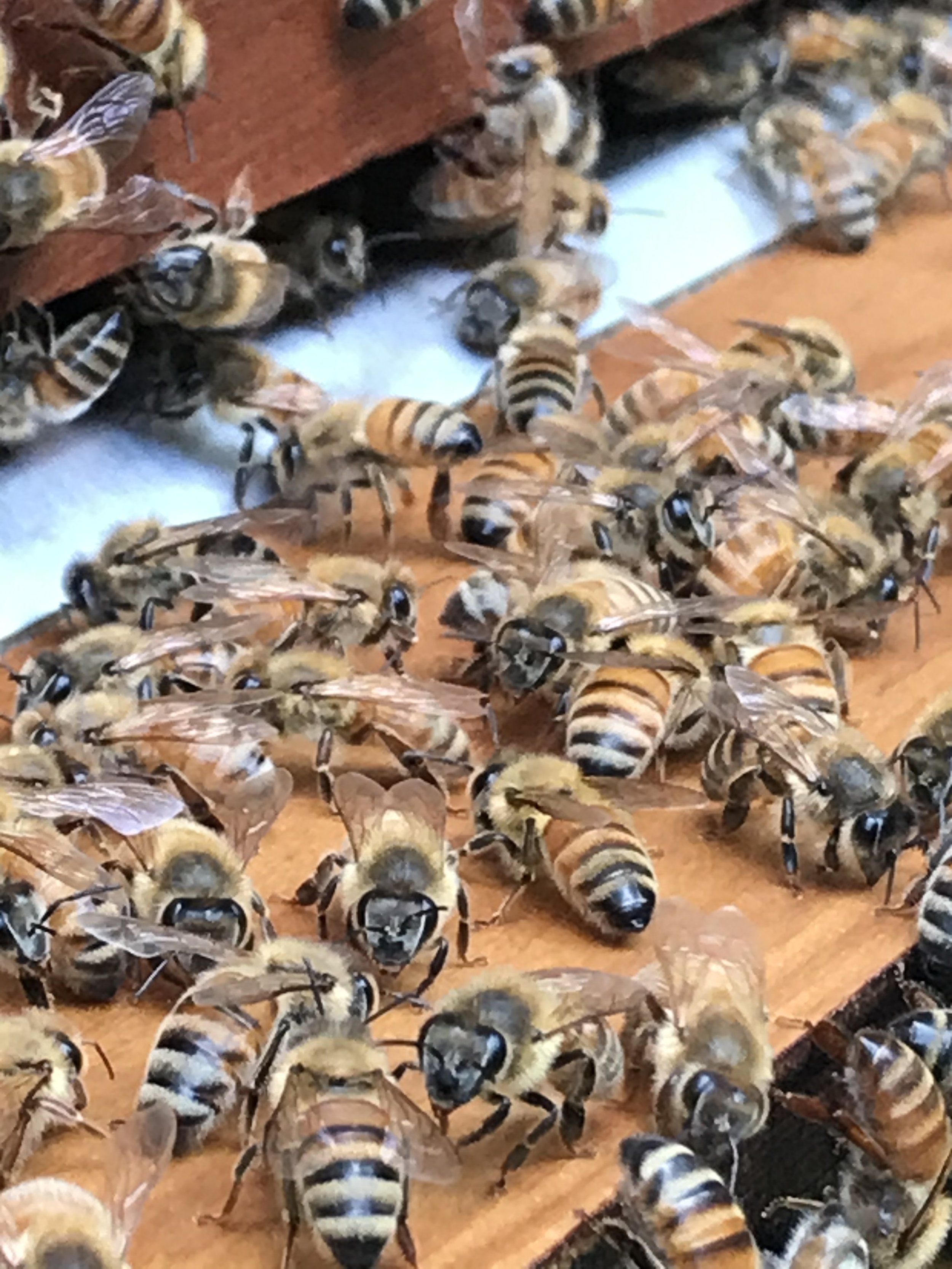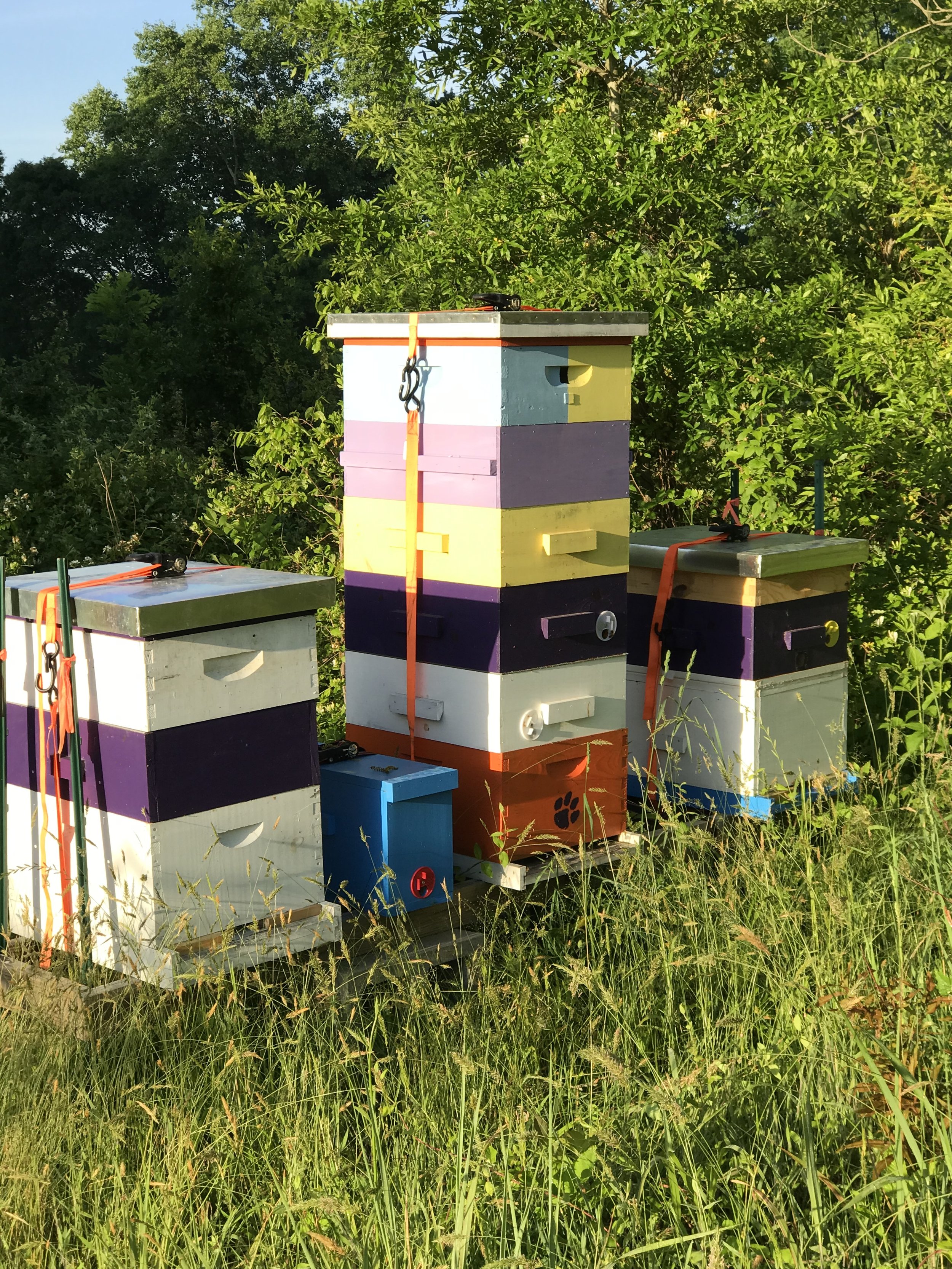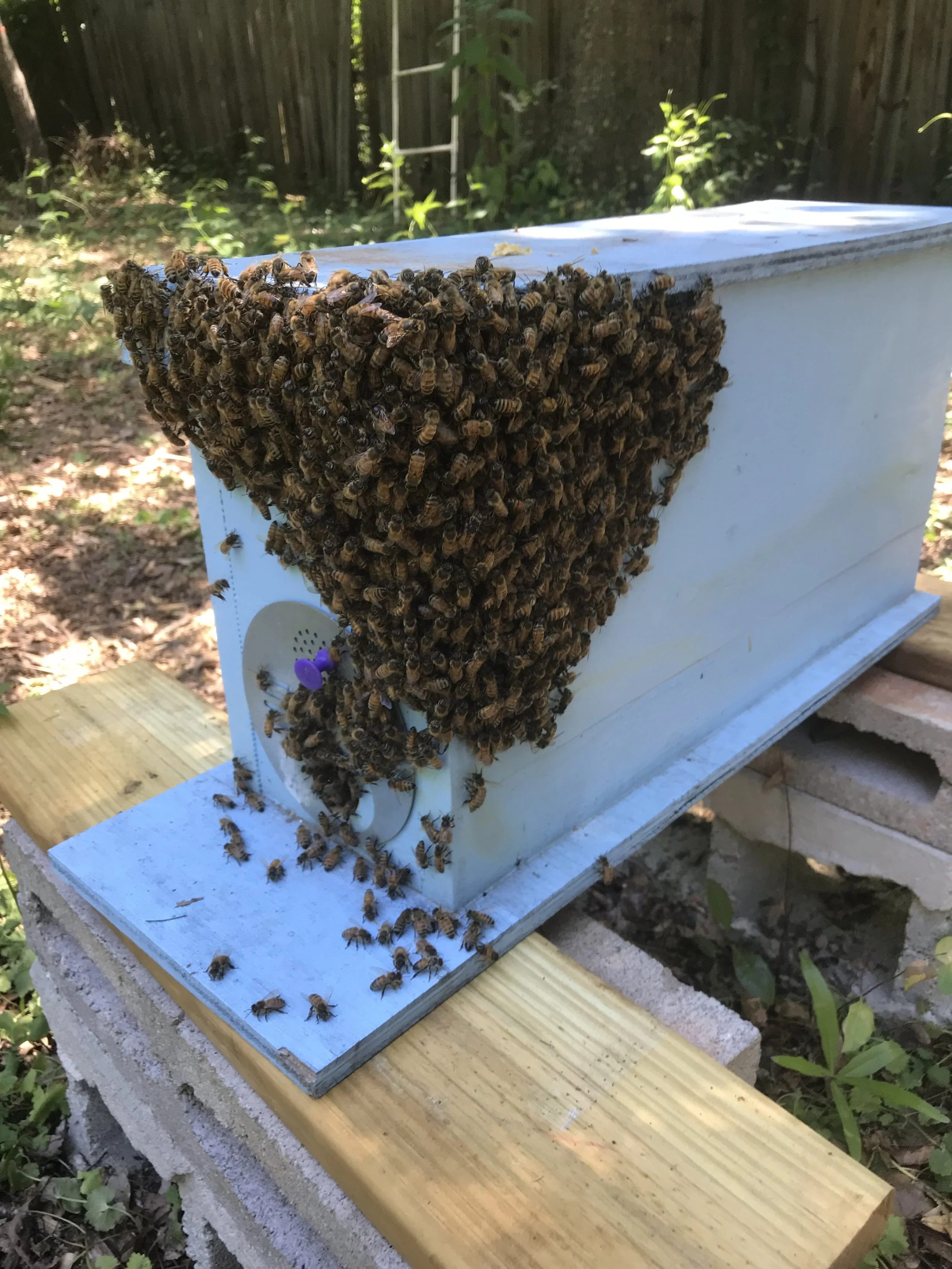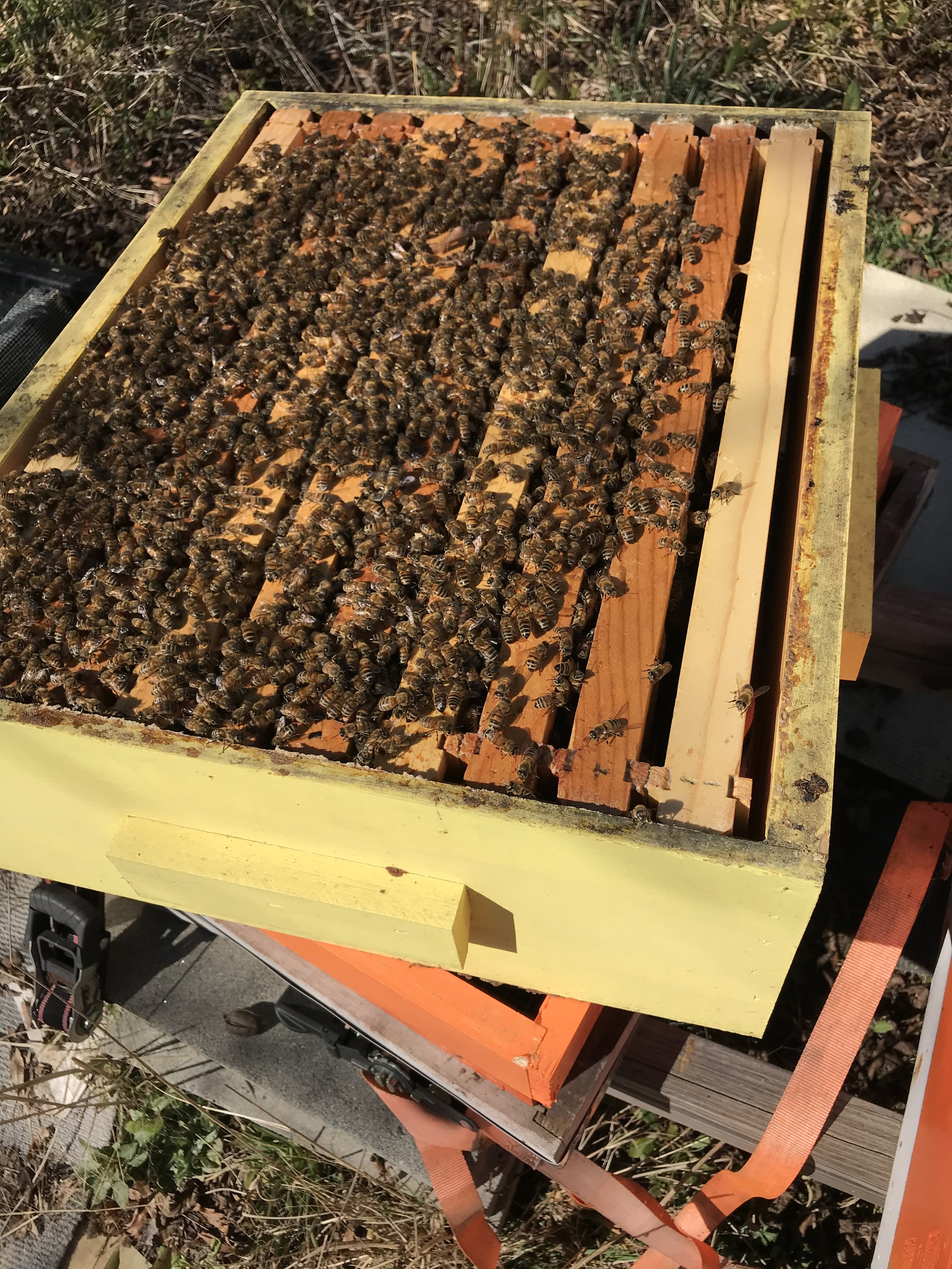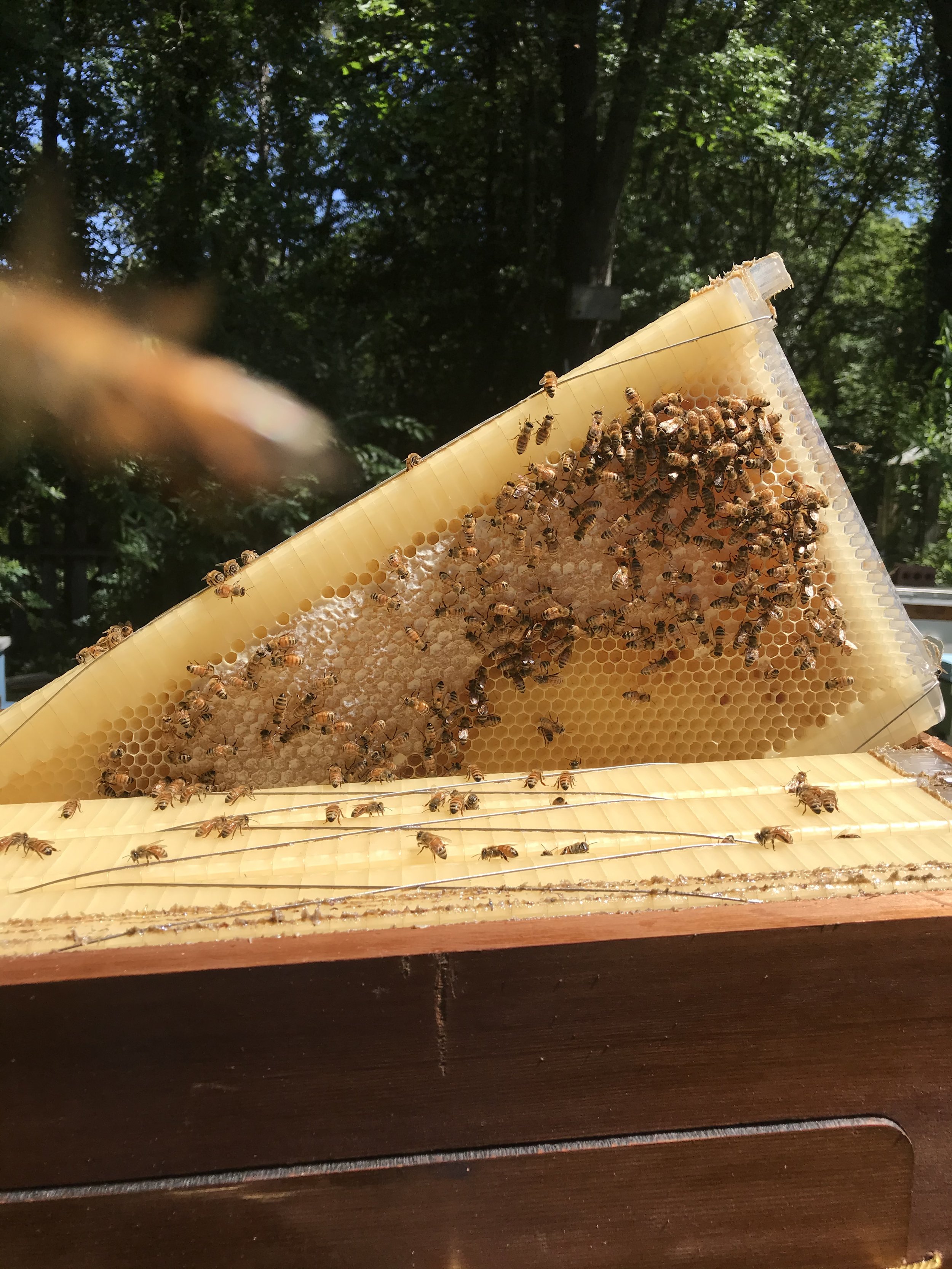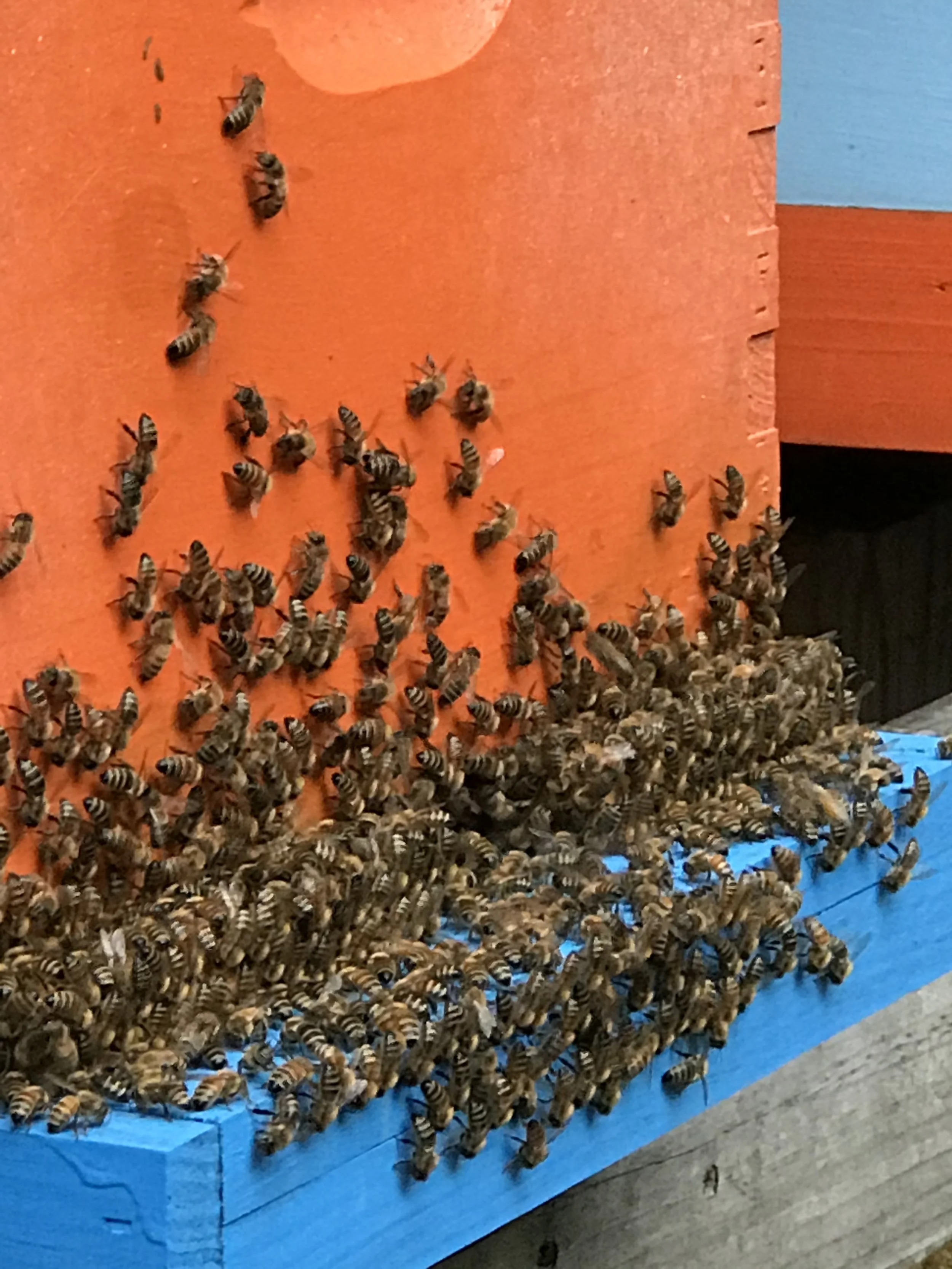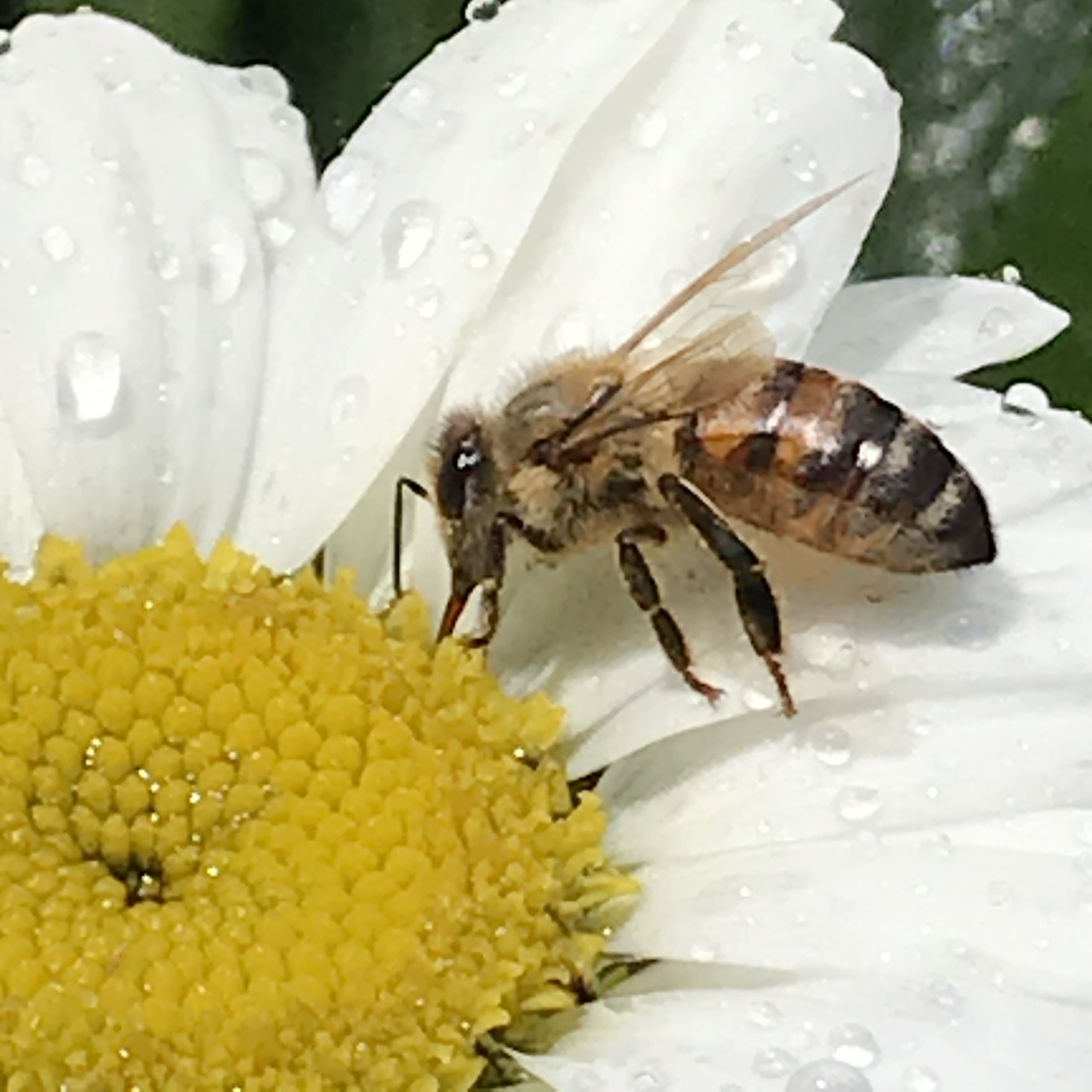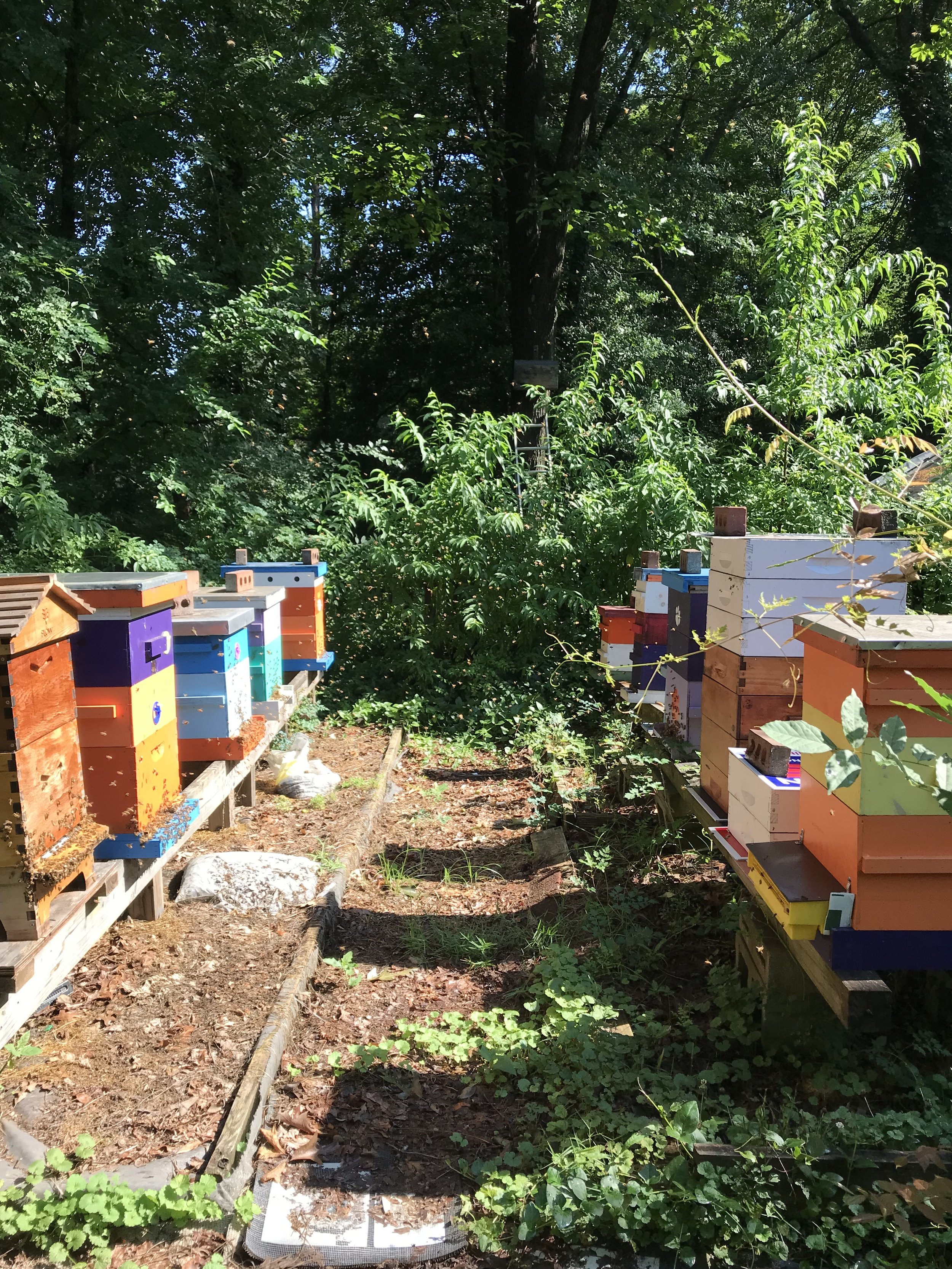Blueprints to Beehives
How Beekeeping Shapes an Architect’s Perspective
A bee pollinating a flower. Photo by Michael Nelon.
Greenville, SC –For nearly 30 years, Michael Nelon has been an integral part of Batson Associates, shaping structures and designing spaces that enhance communities. But outside the office, he’s dedicated to another kind of building—one that buzzes with life. Michael is a beekeeper, a passion that started with a childhood fascination inspired by his grandfather and a simple trip to Sam’s Club. What started as a casual interest has evolved into a commitment to sustainability, structure, and the delicate balance of nature—values that closely align with his work in architecture.
A Hive Mentality: Finding Parallels Between Bees and Buildings
While architecture and beekeeping may seem worlds apart, Michael sees interesting similarities between the two. Just as architects carefully plan out structures with form and function in mind, bees instinctively construct honeycombs with precise geometry. Each cell in a honeycomb is identical in size and serves a predetermined function—whether it’s for storing honey, housing worker bees, or raising future generations. The efficiency of the hive mirrors the intentionality of architectural design, where every space serves a purpose and contributes to the whole.
One of the most fascinating aspects of beekeeping, according to Michael, is the hive’s organization. Each bee has a specific role that evolves throughout its short but impactful life. Young bees start by caring for newly hatched larvae, then transition to cleaning, then to gathering water, and finally to foraging for nectar and pollen. This structured progression ensures the survival of the hive, much like a well-coordinated design team ensures the success of a building project.
Sustainability in Beekeeping and Architecture
Both beekeeping and architecture share a fundamental commitment to sustainability. At Batson Associates, the goal is to create buildings that are efficient, environmentally friendly, and long-lasting. Similarly, beekeeping is about fostering an environment that allows bees to thrive naturally. Just as architects seek out materials that minimize environmental impact, beekeepers aim to preserve the natural ecosystem that supports their colonies.
“Every third bite of food you take has been influenced by a bee,” Michael notes. Bees play a crucial role in pollination, affecting everything from fruits and vegetables to the plants that sustain other wildlife. In the same way, architecture shapes human environments, impacting communities and the people who inhabit them for generations.
The Strength of the Honeycomb
Despite its delicate appearance, the honeycomb structure is incredibly strong. Architects have long admired and studied its hexagonal form for inspiration in creating lightweight yet durable designs. While Michael has yet to incorporate a direct honeycomb pattern into his architectural work, he appreciates its potential. “I’ve looked at the strength of it and tried to figure out ways to use it,” he says, highlighting how nature often provides the best blueprint for innovation.
Finding Peace in the Hive
For Michael, beekeeping isn’t just about maintaining a hive—it’s a moment of stillness in a fast-moving world. “There’s something incredibly peaceful about just sitting with the bees and watching them work,” he shares. Observing their rhythm, their efficiency, and their quiet collaboration offers a sense of balance—one that parallels the mindful attention to detail required in architecture. Just as a well-designed building fosters harmony for its occupants, a thriving hive is a testament to structure, function, and connection.
Telling the Bees
Beekeeping has deep roots in folklore, particularly in Irish tradition, where it’s believed that you should always “tell the bees” about life’s big moments—whether it’s a birth, a wedding, or even the passing of their keeper. This belief speaks to the profound relationship between humans and nature, reminding us that even the smallest creatures are part of our stories. In many ways, architecture holds a similar role—marking milestones, shaping experiences, and standing as a witness to the lives lived within its walls.
Lessons from the Hive
Michael’s experience as a beekeeper has given him a unique perspective on teamwork, adaptability, and the intricate balance of nature and design. Whether overseeing a hive or leading a project, he recognizes that every detail matters and that collaboration is key to success.
At Batson Associates, the goal is to build structures that stand the test of time, just as a hive continuously regenerates itself through careful planning and adaptation. Through his dual passions, Michael Nelon demonstrates that the principles of great design—whether in architecture or in nature—are universal.
So the next time you see a bee hard at work, remember: there’s a little bit of architecture in everything, even in the smallest of creatures.
Established in 1981, Batson Associates is an architecture and interior design firm focused on Institutional project types that deliver environments for healing, wellness, education, and aging. The Greenville, SC based firm works with clients throughout the Southeast. Stay connected with Batson Associates for more associate highlights, project updates, and industry insights by following us on LinkedIn, Facebook, and Instagram. For more information about our work or to discuss how we can help with your next project, please contact us at Batson Associates. Let's build the future together.

